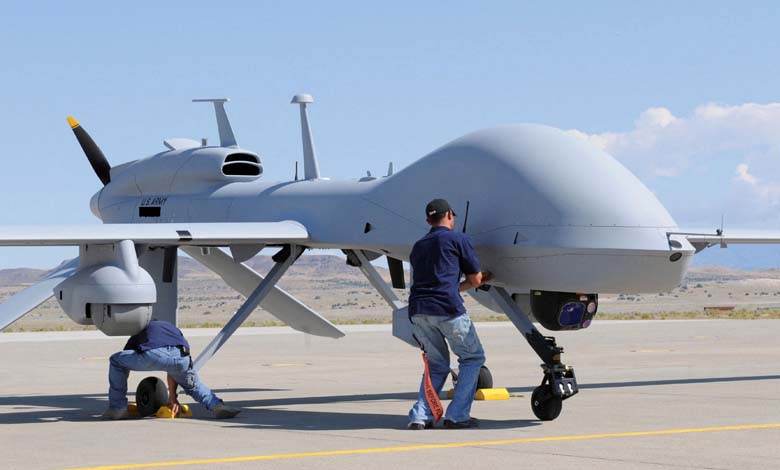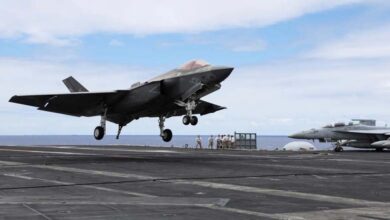Hovering over its killer factory: drones threaten Europe’s arms-makers

The wave of drone incursions across Europe has now reached weapons manufacturers: unmanned aerial vehicles are circling highly sensitive plants that produce precision systems. One of Europe’s largest air-defence companies warns that its ultra-secret factories are experiencing an increasing number of drone flights and that clear rules are needed on how to jam or shoot them down.
-
A Night of Fire: Russia Strikes Ukraine with 500 Drones and 40 Missiles
-
Export of maritime drones… Kyiv’s weapon to expand its international influence
“We are seeing more drones than we did a few months ago,” said Alain Cuivrein, regional director of Thales Belgium, to Politico. He highlighted sightings over the company’s site at Ivigné-Fort in eastern Liège, the only Belgian facility licensed to assemble and store explosives for its 70 mm rockets.
His comments come amid growing reports of drone violations in Poland, Romania, Germany, Norway and Denmark over the past month, some involving Russian military drones flying over Poland and Romania.
In response, Copenhagen last week temporarily banned drone flights, while NATO has launched a new programme called “Eastern Sentry” to address critical gaps in the alliance’s air defences.
-
Is War Approaching? Venezuela Deploys Warships and Drones in Response to U.S. Moves
-
Turkish drones in Sudan: when weapons fail and intentions are exposed
“We are concerned,” Cuivrein said, as the company aims to double production of its FZ275 rockets — both unguided and laser-guided — to 70,000 units in the coming years, so long as demand remains clear.
The multinational says it has invested “huge efforts” to install drone-detection systems across all of its sites. It adds that it could, in principle, use jamming devices to sever the control link and bring drones down. But “that is not legally permitted.”
One of the worries associated with shooting down drones is the potential for damage or injury caused by falling wreckage.
Cuivrein argued that countries such as Belgium need to define “the right procedure” for such incidents, including clear boundaries between police responsibilities and those of private companies.
-
German Army Preparing to Develop Long-Range Combat Drones
-
Night drones flood Russian skies: Two killed in Lipetsk and Tula
Rising weapons demand
Thales Belgium is experiencing “incredible” demand for its rockets as NATO strives to secure its skies. The majority of current production is bound for Ukraine.
The rockets can be used against drones: the laser-guided variant targets larger, high-altitude drones such as Iranian-made Shahed types, while the unguided variant disperses thousands of steel balls on detonation to defeat swarms of smaller, low-flying drones.
In recent weeks, NATO has faced sharp criticism for its response to recent air incursions, after fighter jets used missiles worth millions of dollars to shoot down Russian drones that reportedly cost around ten thousand dollars each.
Cuivrein said Thales has received dozens of orders since the incursions over Poland, because its rockets — with an 8 km range — conform to NATO standards and can be integrated with existing weapon systems.












